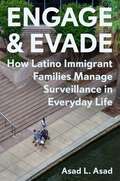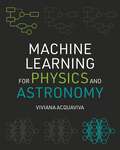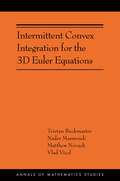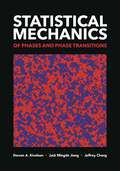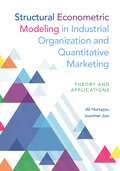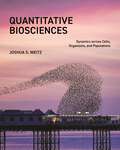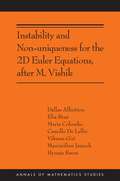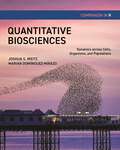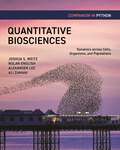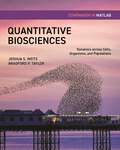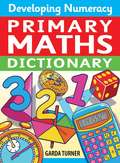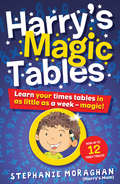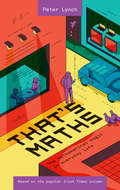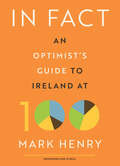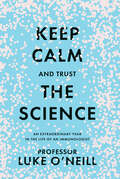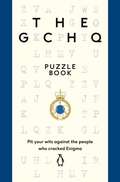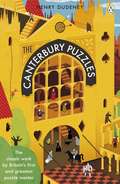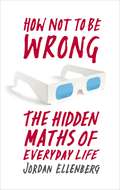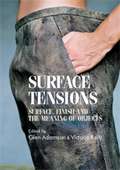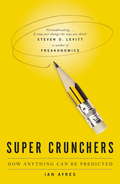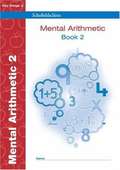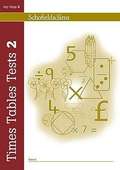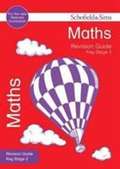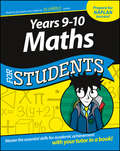- Table View
- List View
Engage and Evade: How Latino Immigrant Families Manage Surveillance in Everyday Life
by Asad L. AsadHow everyday forms of surveillance threaten undocumented immigrants—but also offer them hope for societal inclusionSome eleven million undocumented immigrants reside in the United States, carving out lives amid a growing web of surveillance that threatens their and their families’ societal presence. Engage and Evade examines how undocumented immigrants navigate complex dynamics of surveillance and punishment, providing an extraordinary portrait of fear and hope on the margins.Asad L. Asad brings together a wealth of research, from intimate interviews and detailed surveys with Latino immigrants and their families to up-close observations of immigration officials, to offer a rare perspective on the surveillance that undocumented immigrants encounter daily. He describes how and why these immigrants engage with various institutions—for example, by registering with the IRS or enrolling their kids in public health insurance programs—that the government can use to monitor them. This institutional surveillance feels both necessary and coercive, with undocumented immigrants worrying that evasion will give the government cause to deport them. Even so, they hope their record of engagement will one day help them prove to immigration officials that they deserve societal membership. Asad uncovers how these efforts do not always meet immigration officials’ high expectations, and how surveillance is as much about the threat of exclusion as the promise of inclusion.Calling attention to the fraught lives of undocumented immigrants and their families, this superbly written and compassionately argued book proposes wide-ranging, actionable reforms to achieve societal inclusion for all.
Engage and Evade: How Latino Immigrant Families Manage Surveillance in Everyday Life
by Asad L. AsadHow everyday forms of surveillance threaten undocumented immigrants—but also offer them hope for societal inclusionSome eleven million undocumented immigrants reside in the United States, carving out lives amid a growing web of surveillance that threatens their and their families’ societal presence. Engage and Evade examines how undocumented immigrants navigate complex dynamics of surveillance and punishment, providing an extraordinary portrait of fear and hope on the margins.Asad L. Asad brings together a wealth of research, from intimate interviews and detailed surveys with Latino immigrants and their families to up-close observations of immigration officials, to offer a rare perspective on the surveillance that undocumented immigrants encounter daily. He describes how and why these immigrants engage with various institutions—for example, by registering with the IRS or enrolling their kids in public health insurance programs—that the government can use to monitor them. This institutional surveillance feels both necessary and coercive, with undocumented immigrants worrying that evasion will give the government cause to deport them. Even so, they hope their record of engagement will one day help them prove to immigration officials that they deserve societal membership. Asad uncovers how these efforts do not always meet immigration officials’ high expectations, and how surveillance is as much about the threat of exclusion as the promise of inclusion.Calling attention to the fraught lives of undocumented immigrants and their families, this superbly written and compassionately argued book proposes wide-ranging, actionable reforms to achieve societal inclusion for all.
Machine Learning for Physics and Astronomy
by Viviana AcquavivaA hands-on introduction to machine learning and its applications to the physical sciencesAs the size and complexity of data continue to grow exponentially across the physical sciences, machine learning is helping scientists to sift through and analyze this information while driving breathtaking advances in quantum physics, astronomy, cosmology, and beyond. This incisive textbook covers the basics of building, diagnosing, optimizing, and deploying machine learning methods to solve research problems in physics and astronomy, with an emphasis on critical thinking and the scientific method. Using a hands-on approach to learning, Machine Learning for Physics and Astronomy draws on real-world, publicly available data as well as examples taken directly from the frontiers of research, from identifying galaxy morphology from images to identifying the signature of standard model particles in simulations at the Large Hadron Collider.Introduces readers to best practices in data-driven problem-solving, from preliminary data exploration and cleaning to selecting the best method for a given taskEach chapter is accompanied by Jupyter Notebook worksheets in Python that enable students to explore key conceptsIncludes a wealth of review questions and quizzesIdeal for advanced undergraduate and early graduate students in STEM disciplines such as physics, computer science, engineering, and applied mathematicsAccessible to self-learners with a basic knowledge of linear algebra and calculusSlides and assessment questions (available only to instructors)
Intermittent Convex Integration for the 3D Euler Equations: (AMS-217) (Annals of Mathematics Studies #217)
by Tristan Buckmaster Nader Masmoudi Matthew Novack Vlad VicolA new threshold for the existence of weak solutions to the incompressible Euler equationsTo gain insight into the nature of turbulent fluids, mathematicians start from experimental facts, translate them into mathematical properties for solutions of the fundamental fluids PDEs, and construct solutions to these PDEs that exhibit turbulent properties. This book belongs to such a program, one that has brought convex integration techniques into hydrodynamics. Convex integration techniques have been used to produce solutions with precise regularity, which are necessary for the resolution of the Onsager conjecture for the 3D Euler equations, or solutions with intermittency, which are necessary for the construction of dissipative weak solutions for the Navier-Stokes equations. In this book, weak solutions to the 3D Euler equations are constructed for the first time with both non-negligible regularity and intermittency. These solutions enjoy a spatial regularity index in L^2 that can be taken as close as desired to 1/2, thus lying at the threshold of all known convex integration methods. This property matches the measured intermittent nature of turbulent flows. The construction of such solutions requires technology specifically adapted to the inhomogeneities inherent in intermittent solutions. The main technical contribution of this book is to develop convex integration techniques at the local rather than global level. This localization procedure functions as an ad hoc wavelet decomposition of the solution, carrying information about position, amplitude, and frequency in both Lagrangian and Eulerian coordinates.
Statistical Mechanics of Phases and Phase Transitions
by Steven A. Kivelson Jack Mingde Jiang Jeffrey ChangAn engaging undergraduate introduction to the statistical mechanics of phase transitionsStatistical mechanics deploys a powerful set of mathematical approaches for studying the thermodynamic properties of complex physical systems. This textbook introduces students to the statistical mechanics of systems undergoing changes of state, focusing on the basic principles for classifying distinct thermodynamic phases and the critical phenomena associated with transitions between them. Uniquely designed to promote active learning, Statistical Mechanics of Phases and Phase Transitions presents some of the most beautiful and profound concepts in physics, enabling students to obtain an essential understanding of a computationally challenging subject without getting lost in the details.Provides a self-contained, conceptually deep introduction to the statistical mechanics of phases and phase transitions from a modern perspectiveCarefully leads students from spontaneously broken symmetries to the universality of phase transitions and the renormalization groupEncourages student-centric active learning suitable for both the classroom and self-studyFeatures a wealth of guided worksheets with full solutions throughout the book that help students learn by doingIncludes informative appendixes that cover key mathematical concepts and methodsIdeal for undergraduate physics majors and beginning graduate studentsSolutions manual for all end-of-chapter problems (available only to instructors)
Structural Econometric Modeling in Industrial Organization and Quantitative Marketing: Theory and Applications
by Ali Hortaçsu Joonhwi JooA concise and rigorous introduction to widely used approaches in structural econometric modeling Structural econometric modeling specifies the structure of an economic model and estimates the model’s parameters from real-world data. Structural econometric modeling enables better economic theory–based predictions and policy counterfactuals. This book offers a primer on recent developments in these modeling techniques, which are used widely in empirical industrial organization, quantitative marketing, and related fields. It covers such topics as discrete choice modeling, demand modes, estimation of the firm entry models with strategic interactions, consumer search, and theory/empirics of auctions. The book makes highly technical material accessible to graduate students, describing key insights succinctly but without sacrificing rigor.• Concise overview of the most widely used structural econometric models• Rigorous and systematic treatment of the topics, emphasizing key insights• Coverage of demand estimation, estimation of static and dynamic game theoretic models, consumer search, and auctions• Focus on econometric models while providing concise reviews of relevant theoretical models
Quantitative Biosciences: Dynamics across Cells, Organisms, and Populations
by Joshua S. WeitzA hands-on approach to quantitative reasoning in the life sciencesQuantitative Biosciences establishes the quantitative principles of how living systems work across scales, drawing on classic and modern discoveries to present a case study approach that links mechanisms, models, and measurements. Each case study is organized around a central question in the life sciences: Are mutations dependent on selection? How do cells respond to fluctuating signals in the environment? How do organisms move in flocks given local sensing? How does the size of an epidemic depend on its initial speed of spread? Each question provides the basis for introducing landmark advances in the life sciences while teaching students—whether from the life sciences, physics, computational sciences, engineering, or mathematics—how to reason quantitatively about living systems given uncertainty.Draws on real-world case studies in molecular and cellular biosciences, organismal behavior and physiology, and populations and ecological communitiesStand-alone lab guides available in Python, R, and MATLAB help students move from learning in the classroom to doing research in practiceHomework exercises build on the lab guides, emphasizing computational model development and analysis rather than pencil-and-paper derivationsSuitable for capstone undergraduate classes, foundational graduate classes, or as part of interdisciplinary courses for students from quantitative backgroundsCan be used as part of conventional, flipped, or hybrid instruction formatsAdditional materials available to instructors, including lesson plans and homework solutions
Instability and Non-uniqueness for the 2D Euler Equations, after M. Vishik: (AMS-219) (Annals of Mathematics Studies #215)
by Camillo De Lellis Elia Brué Dallas Albritton Maria Colombo Vikram Giri Maximilian Janisch Hyunju KwonAn essential companion to M. Vishik&’s groundbreaking work in fluid mechanicsThe incompressible Euler equations are a system of partial differential equations introduced by Leonhard Euler more than 250 years ago to describe the motion of an inviscid incompressible fluid. These equations can be derived from the classical conservations laws of mass and momentum under some very idealized assumptions. While they look simple compared to many other equations of mathematical physics, several fundamental mathematical questions about them are still unanswered. One is under which assumptions it can be rigorously proved that they determine the evolution of the fluid once we know its initial state and the forces acting on it. This book addresses a well-known case of this question in two space dimensions. Following the pioneering ideas of M. Vishik, the authors explain in detail the optimality of a celebrated theorem of V. Yudovich from the 1960s, which states that, in the vorticity formulation, the solution is unique if the initial vorticity and the acting force are bounded. In particular, the authors show that Yudovich&’s theorem cannot be generalized to the L^p setting.
Quantitative Biosciences Companion in R: Dynamics across Cells, Organisms, and Populations
by Joshua S. Weitz Marian Domínguez-MirazoA hands-on lab guide in the R programming language that enables students in the life sciences to reason quantitatively about living systems across scalesThis lab guide accompanies the textbook Quantitative Biosciences, providing students with the skills they need to translate biological principles and mathematical concepts into computational models of living systems. This hands-on guide uses a case study approach organized around central questions in the life sciences, introducing landmark advances in the field while teaching students—whether from the life sciences, physics, computational sciences, engineering, or mathematics—how to reason quantitatively in the face of uncertainty.Draws on real-world case studies in molecular and cellular biosciences, organismal behavior and physiology, and populations and ecological communitiesEncourages good coding practices, clear and understandable modeling, and accessible presentation of resultsHelps students to develop a diverse repertoire of simulation approaches, enabling them to model at the appropriate scaleBuilds practical expertise in a range of methods, including sampling from probability distributions, stochastic branching processes, continuous time modeling, Markov chains, bifurcation analysis, partial differential equations, and agent-based simulationsBridges the gap between the classroom and research discovery, helping students to think independently, troubleshoot and resolve problems, and embark on research of their ownStand-alone computational lab guides for Quantitative Biosciences also available in Python and MATLAB
Quantitative Biosciences Companion in Python: Dynamics across Cells, Organisms, and Populations
by Joshua S. Weitz Nolan English Alexander B. Lee Ali ZamaniA hands-on lab guide in the Python programming language that enables students in the life sciences to reason quantitatively about living systems across scalesThis lab guide accompanies the textbook Quantitative Biosciences, providing students with the skills they need to translate biological principles and mathematical concepts into computational models of living systems. This hands-on guide uses a case study approach organized around central questions in the life sciences, introducing landmark advances in the field while teaching students—whether from the life sciences, physics, computational sciences, engineering, or mathematics—how to reason quantitatively in the face of uncertainty.Draws on real-world case studies in molecular and cellular biosciences, organismal behavior and physiology, and populations and ecological communitiesEncourages good coding practices, clear and understandable modeling, and accessible presentation of resultsHelps students to develop a diverse repertoire of simulation approaches, enabling them to model at the appropriate scaleBuilds practical expertise in a range of methods, including sampling from probability distributions, stochastic branching processes, continuous time modeling, Markov chains, bifurcation analysis, partial differential equations, and agent-based simulationsBridges the gap between the classroom and research discovery, helping students to think independently, troubleshoot and resolve problems, and embark on research of their ownStand-alone computational lab guides for Quantitative Biosciences also available in R and MATLAB
Quantitative Biosciences Companion in MATLAB: Dynamics across Cells, Organisms, and Populations
by Joshua S. Weitz Bradford TaylorA hands-on lab guide in the MATLAB programming language that enables students in the life sciences to reason quantitatively about living systems across scalesThis lab guide accompanies the textbook Quantitative Biosciences, providing students with the skills they need to translate biological principles and mathematical concepts into computational models of living systems. This hands-on guide uses a case study approach organized around central questions in the life sciences, introducing landmark advances in the field while teaching students—whether from the life sciences, physics, computational sciences, engineering, or mathematics—how to reason quantitatively in the face of uncertainty.Draws on real-world case studies in molecular and cellular biosciences, organismal behavior and physiology, and populations and ecological communitiesEncourages good coding practices, clear and understandable modeling, and accessible presentation of resultsHelps students to develop a diverse repertoire of simulation approaches, enabling them to model at the appropriate scaleBuilds practical expertise in a range of methods, including sampling from probability distributions, stochastic branching processes, continuous time modeling, Markov chains, bifurcation analysis, partial differential equations, and agent-based simulationsBridges the gap between the classroom and research discovery, helping students to think independently, troubleshoot and resolve problems, and embark on research of their ownStand-alone computational lab guides for Quantitative Biosciences also available in Python and R
Developing Numeracy: Key Stage 2 Concise Illustrated Mathematics Language (PDF)
by Garda TurnerA guide to the language and concepts used in Key Stage 2 mathematics that gives concise definitions accompanied by colourful diagrams and photographs to aid understanding. It contains worked examples to offer further explanation.
Harry's Magic Tables: Learn your times tables in as little as a week – magic! Now up to 12 x Times Tables
by Stephanie MoraghanRhymes x pictures = times tables made easy!Nine year old Harry Moraghan never found maths easy. Then he discovered he REALLY hated it when it came to learning multiplication tablesSo Harry’s mum invented an ingenious way of remembering his tables by using rhymes and pictures. In two weeks Harry had all his multiplication tables down pat.Soon after, Harry’s teacher gave the class a test. Harry finished it in five minutes and got every question right! News of Harry’s Magic Tables spread like wildfire in his school. In no time, the book was shared with some lucky classmates, friends, cousins, and eventually complete strangers too! Now many happy children know their tables inside out – and so can you!
That's Maths: The Mathematical Magic in Everyday Life
by Peter LynchFrom atom bombs to rebounding slinkies, open your eyes to the mathematical magic in the everyday. Mathematics isn’t just for academics and scientists, a fact meteorologist and blogger Peter Lynch has spent the past several years proving through his Irish Times newspaper column and blog, That’s Maths.Here, he shows how maths is all around us, with chapters on the beautiful equations behind designing a good concert venue, predicting the stock market and modelling the atom bomb, as well as playful meditations on everything from coin-stacking to cartography. If you left school thinking maths was boring, think again!
In Fact: An Optimist’s Guide to Ireland at 100
by Mark HenryThis optimistic guide to Ireland at 100 tells our national story through facts and stats, placing Ireland under the microscope to chart 100 achievements of the past 100 years. Ireland remained one of the most poverty-stricken nations in Europe for decades after the State was formed. Yet now, it has the second-highest standard of living in the world.Author Mark Henry has gathered the data to tell an under-told story of our national progress across every aspect of Irish life. He identifies the factors that account for Ireland’s extraordinary success, as well as the five most prominent psychological biases that prevent us from recognising how far we have come. He also highlights the greatest challenges that we must now address if we are to continue to progress in the century ahead. While there is still more to be done, In Fact illustrates that Ireland, for all its imperfections, is in a much better state than you might think.
Keep Calm and Trust the Science: An extraordinary year in the life of an immunologist
by Professor Luke O'NeillProfessor Luke O’Neill has become one of the most well-known and trusted voices of Ireland’s COVID-19 pandemic, thrust into the spotlight as we struggled to make sense of a crisis that saw the country grind to a halt. In these personal diaries, Luke reveals what life was like behind the scenes as he endeavoured to keep calm and trust that the science would save us.Luke’s lockdown diaries show the highs and lows of work at the cutting edge in his Trinity College lab, as well as his experience of the disappointments and the breakthroughs in science around the world, and ultimately the contribution scientists made to the health outcomes of millions globally. Shot through with the natural positivity and humour that have made Luke a home-grown hero, Keep Calm and Trust the Science is a compelling account of a dramatic year in Irish history from one of its key players.
The GCHQ Puzzle Book
by GchqWould GCHQ recruit you? Pit your wits against the people who cracked Enigma in the official puzzle book from Britain's secretive intelligence organisation . . . --------------------------------Odd word outThe themes in the following words are identical, but totally different! Which is the odd word out in each case? a) ANGLE, BRING, CLAMP, DIRTY, EXACT, FIELD, GRASS, HEART, IMAGE, JAUNTb) ABBEY, BURST, COURT, DRINK, ENJOY, FOUND, GIANT, HARMS, IDIOT, JUMPYIdentify MeMy first is in a combine harvester, but not in a ploughshare. My second is in a pigsty, but not in a cowshed.My third does not exist.My whole is in a farmyard, but not in a jungle.Identify me.--------------------------------GCHQ is a top-secret intelligence and security agency which recruits some of the very brightest minds. Over the years, their codebreakers have helped keep our country safe, from the Bletchley Park breakthroughs of WWII to the modern-day threat of cyberattack. So it comes as no surprise that, even in their time off, the staff at GCHQ love a good puzzle. Whether they're recruiting new staff or challenging each other to the toughest Christmas quizzes and treasure hunts imaginable, puzzles are at the heart of what GCHQ does. Now they're opening up their archives of decades' worth of codes, puzzles and challenges for everyone to try. In this book you will find: - Tips on how to get into the mindset of a codebreaker - Puzzles ranging in difficulty from easy to brain-bending - A competition section where we search for Britain's smartest puzzler Good luck!'Fiendish . . . as frustrating, divisive and annoying as it is deeply fulfilling: the true spirit of Christmas' The Guardian 'Ideal for the crossword enthusiast' Daily Telegraph
The Canterbury Puzzles
by Henry DudeneyFor the mastermind who has what it takes to solve the tricky conundrums from Britain's first and greatest puzzle master.---------------------------------------Solve the puzzle of The Mystery of Ravensdene Park . . . trace the route of the butler, the gamekeeper and the two anonymous guests and the key to the mystery will reveal itself.---------------------------------------Decipher the riddle of The Frogs' Ring for The Merry Monks of Riddlewell . . . ---------------------------------------At The Squire's Christmas Puzzle Party ascertain just how many kisses had been given Under the Mistletoe Bough . . . ---------------------------------------First published in 1907, Dudeney's The Canterbury Puzzles is a classic of the genre, based on characters from Chaucer's Tales. The book contains 114 puzzles suitable for young enthusiasts, recreational mathematicians and veteran puzzlers alike. As challenging today as it was over a century ago, this ingenious book will provide hours-worth of puzzles to keep your brain alert."Regular exercise is supposed to be as necessary for the brain as for the body. Many of us are very apt to suffer from mental cobwebs, and there is nothing equal to the solving of puzzles for sweeping them away." - Henry Dudeney (1847-1930)
How Not to Be Wrong: The Hidden Maths of Everyday Life
by Jordan EllenbergThe maths we learn in school can seem like an abstract set of rules, laid down by the ancients and not to be questioned. In fact, Jordan Ellenberg shows us, maths touches on everything we do, and a little mathematical knowledge reveals the hidden structures that lie beneath the world's messy and chaotic surface. In How Not to be Wrong, Ellenberg explores the mathematician's method of analyzing life, from the everyday to the cosmic, showing us which numbers to defend, which ones to ignore, and when to change the equation entirely. Along the way, he explains calculus in a single page, describes Gödel's theorem using only one-syllable words, and reveals how early you actually need to get to the airport.
Surface Tensions: Surface, Finish and the Meaning of Objects (PDF)
by Glenn Adamson Victoria KelleySurfaces are often held to be of lesser consequence than ‘deeper’ or more ‘substantive’ aspects of artworks and objects. Yet it is also possible to conceive of the surface in more positive terms: as a site where complex forces meet. Surfaces can be theorized as membranes, protective shells, sensitive skins, even thicknesses in their own right. The surface is not so much a barrier to content as an opportunity for encounter: in new objects, the surface is the site of qualities of finish, texture, the site of tactile interaction, the last point of contact between object and maker, and the first point of contact between object and user. Surface tensions includes sixteen essays that explore this theoretically uncharted terrain. The subjects range widely: domestic maintenance; avant-garde fashion; the faking of antiques; postmodern architecture and design; contemporary film costume. Of particular emphasis within the volume are textiles, which are among the most complex and culturally rich materialisations of surface. As a whole, the book provides insights into the whole lifecycle of objects, not just their condition when new.
Super Crunchers: How Anything Can Be Predicted
by Ian AyresCompanies used to rely on human experts and their years of experience to guide them. Now, cutting-edge organizations are mining the data and crunching numbers instead, to come up with more accurate, less biased predictions. As Freakonomics detailed, statistical analysis can reveal the secret levers of causation. But economist Ian Ayres argues that that's only part of the story - super crunching is revolutionizing the way we all make decisions. Beginning with examples of the mathematician who out-predicted wine buffs in determining the best vintages, and the sports scouts who now use statistics rather than intuition to pick winners, Super Crunchers exposes the world of data-miners, introducing the people and the techniques. It illuminates the hidden patterns all around us. No businessperson, academic, student, or consumer (statistically that's everyone) should make another move without getting to grips with thinking-by-numbers - the new way to be smart, savvy and statistically superior.
Mental Arithmetic 2 (PDF)
by T R GoddardMental Arithmetic provides rich and varied practice to develop pupils' essential maths skills and prepare them for all aspects of the Key Stage 2 national tests. It may also be used as preparation for the 11+, and with older students for consolidation and recovery. Tailored to meet the requirements of the National Curriculum for primary mathematics, each book contains 36 one-page tests. Each test is presented in a unique three-part format comprising: questions where use of language is kept to a minimum; questions using number vocabulary; questions focusing on one- and two-step word problems. Structured according to ability rather than age, the series allows children to work at their own pace, building confidence and fluency. Two Entry Tests are available in the Mental Arithmetic Teacher's Guide and on the Schofield & Sims website, enabling teachers, parents and tutors to select the appropriate book for each child. All the books can be used flexibly for individual, paired, group or whole-class maths practice, as well as for homework and one-to-one intervention.Mental Arithmetic 2 is aimed at pupils in lower Key Stage 2 and covers the key subject areas of number, measurement, geometry and statistics, including fractions, decimals, times tables, units of length, mass and capacity, geometric shapes and co-ordinates. Three Progress Charts, together with four topic-based Check-up Tests, are provided to monitor learning and identify any gaps in understanding. A separate accompanying answer book, Mental Arithmetic Book 2 Answers (ISBN 9780721708065), contains correct answers to all the questions, making marking quick and easy.
Times Tables Tests 2 (PDF)
by Hilary KollTimes Tables Tests provides regular and structured times tables practice, helping children to strengthen their understanding of essential multiplication and division facts. Times Tables Tests 2 covers times tables up to and including 13 x 13 and is suitable for children in Years 4, 5 and 6.
Key Stage 2 Maths Revision Guide (PDF)
by Steve Mills Hilary KollClosely matched to the National Curriculum, the Schofield & Sims Revision Guides help children to revise what they have learnt at school, in preparation for the end of key stage tests. Clearly presented examples and illustrations help bring revision to life, while targeted practice questions highlight any gaps in understanding. The Key Stage 2 Maths Revision Guide covers the statutory requirements for Key Stage 2 maths, including: number, fractions, decimals and percentages, ratio and proportion, calculation, problem solving, algebra, measurement, geometry and statistics. The accessible format and index enable children either to work through the topics in order, or to focus on a particular subject area.This 96-page book includes: helpful Tips for tests and advice on how to revise effectively; Remember boxes to summarise key information; regular Test yourself questions and answers to check recall of information; a Glossary to encourage the correct spelling and use of subject vocabulary.The accompanying Key Stage 2 Maths Practice Papers (ISBN 9780721713632) reflect the appearance and content of the national tests, providing further opportunity for revision and test preparation.
Years 9 - 10 Maths For Students
by Consumer DummiesYour tutor in a book! Master the essential mathematical skills for success! 'I don't know how to do this' is a refrain heard whilst many a student is doing homework. Parents are increasingly called on for assistance, but are themselves struggling to help their children. Years 9-10 Maths For Students is a reference guide for both students and parents, aiming to fill the gaps in a student's knowledge base, build confidence and reduce stress. Written with the same friendly, how-to approach of the successful For Dummies books, this new educational reference will empower students and develop their mathematical skills for exams, NAPLAN testing and, most importantly, life beyond secondary school. With worries that students are being taught to pass tests at the expense of understanding — this guide will help students cement their mathematical foundations. Grasp the nuts and bolts of numbers, algebra, geometry and measurement. Master simple to complex maths questions, including worded problems Complete homework and prepare for tests with confidence Save money on expensive tutors. Years 9-10 Maths For Students empowers students to improve their educational outcomes.
